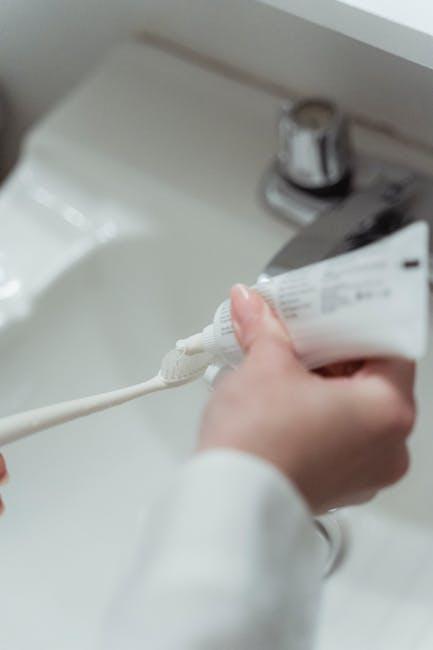Fluoride Ban Could Create Cavities For 1 Of Every 3 U.S. Kids – U.S. News & World Report
Fluoride has long been heralded as a silent hero in the fight against tooth decay, especially for children. However, recent discussions about banning fluoride in drinking water in certain areas have made waves across the healthcare community. According to U.S. News & World Report, such a ban could potentially lead to cavities in as many as 1 in every 3 children in the United States. This article explores the implications of such policy changes, benefits of fluoride, and practical tips to maintain dental health in a fluoride-limited world.
What Is Fluoride and Why Does It Matter?
Fluoride is a naturally occurring mineral that helps strengthen tooth enamel, making it more resistant to decay caused by acids and bacteria. It is commonly added to community water supplies to prevent tooth decay — a practice endorsed by organizations like the American Dental Association (ADA) and the Centers for Disease Control and Prevention (CDC).
Key Benefits of Fluoride Include:
- Reduces tooth decay: Fluoride helps to remineralize weakened enamel and slows the loss of minerals from tooth surfaces.
- Decreases cavities: Areas with water fluoridation report significantly lower cavity rates among children and adults.
- Inexpensive public health measure: Fluoridating water is a cost-effective way to improve oral health at a community level.
The Impending Fluoride Ban and Its Potential Impact on Children’s Oral Health
As debate grows over the safety and ethics of adding fluoride to water supplies, some communities have proposed banning it outright. But what could this mean for children’s dental health in the U.S.?
Several studies indicate that communities without fluoridated water face significantly higher rates of childhood tooth decay. Reduced fluoride exposure threatens to reverse decades of progress, especially for vulnerable populations with limited access to dental care.
Statistics on Childhood Cavities and Fluoride Exposure
| Statistic | With Fluoride | Without Fluoride |
|---|---|---|
| Children with cavities (%) | 25% | 35% |
| Average cavities per child | 1.2 | 2.1 |
| Dental treatment visits per year | 0.8 | 1.5 |
Why Parents and Communities Should Care
Children’s oral health affects more than just smiles. Poor dental health can lead to:
- Pain and discomfort affecting eating and sleeping
- Missed school days impacting learning
- Expensive dental treatments that strain family budgets
- Long-term risk for other health problems like infections
Communities can suffer economic and social consequences as well when large portions of the population experience oral health problems.
Practical Tips to Protect Kids’ Teeth in the Face of a Fluoride Ban
If fluoride is limited or banned, families can take proactive steps to protect young teeth.
1. Maintain Regular Dental Visits
Early and regular checkups help dentists apply topical fluoride treatments and catch decay early.
2. Emphasize Good Oral Hygiene
- Brush teeth twice daily with fluoride toothpaste (if still allowed)
- Floss daily to remove plaque buildup
3. Monitor Diet
- Limit sugary snacks and drinks that feed cavity-causing bacteria
- Encourage a balanced diet rich in calcium and vitamins
4. Use Fluoride Alternatives
Dental products like fluoride varnishes and rinses can provide localized protection when water fluoridation is unavailable.
Case Study: The Impact of Removing Fluoride in a Small Community
In 2018, the town of Clearwater removed fluoride from its public water supply after residents voted for a ban. Within two years, the local clinic saw a 40% increase in childhood cavity cases, particularly among low-income families. Dental care costs also surged, forcing schools to initiate oral health education programs and mobile dental clinics.
This case underscores how critical fluoride is for maintaining community oral health, especially for those who may not afford private dental care.
Firsthand Experience: A Parent’s Perspective
Jessica, a mother of two from a non-fluoridated region, shared:
“After our town stopped adding fluoride to the water, my youngest child had three cavities in a year, despite our best efforts. I wish more people understood how fluoride protects kids. Now, we use prescription fluoride toothpaste and prioritize regular dental visits to keep their teeth healthy.”
Conclusion
The proposed fluoride ban could have serious, lasting consequences on the dental health of American children. With 1 in 3 kids at risk for cavities, fluoride’s proven benefits cannot be overlooked. While alternatives and better dental hygiene can help, community water fluoridation remains one of the most effective, affordable public health measures to reduce tooth decay.
Parents, healthcare providers, and policymakers must work together to ensure continued access to fluoride and promote strong oral health habits for the next generation. Protecting children’s smiles today means a healthier, happier future tomorrow.


